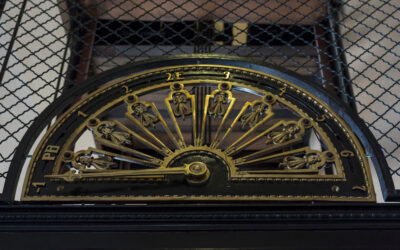Russian has several unique sounds that can be difficult for English speakers to pronounce because they have no direct equivalents in English. These sounds contribute to the distinct sound of the Russian language.
Ы (Yery)
The vowel Ы (yery) is a sound that doesn’t exist in English. It’s produced by positioning the tongue high and back in the mouth, creating a sound somewhere between “i” in “bit” and “u” in “pull.” It’s one of the trickiest Russian vowels for English speakers to master.
Х (Kh)
The consonant Х (kh) is a voiceless velar fricative, similar to the sound made in the Scottish word “loch” or the German “Bach.” It’s a harsher, throatier sound than any English “h.”
Щ (Shch)
The letter Щ (shch) is a sound that’s often described as somewhere between “sh” in “shower” and “ch” in “cheese.” It’s a softer, more prolonged “sh” sound, found in words like “щедрый” (shchedryy – generous).
Й (Yot)
The Й (yot) sound, similar to the English “y” in “yes,” appears in combinations like “ай” (ay) or “ой” (oy). While not entirely foreign, its use in forming diphthongs and softening other vowels can be difficult for non-native speakers.
Ю (Yu) and Ё (Yo)
The Russian Ю (yu) and Ё (yo) are combination sounds that don’t exist as single phonemes in English. Ю sounds like “you” said quickly, while Ё is a stressed “yo” sound that often merges into Е (ye) in unstressed positions.
Ц (Ts)
The letter Ц (ts) represents a hard, sharp sound similar to the “ts” in “cats.” Unlike in English, it’s not a combination of two sounds but rather a single phoneme, commonly found in words like “царь” (tsar).
Ь (Soft Sign)
While the Ь (soft sign) doesn’t represent a sound itself, it plays a crucial role in softening the consonants that precede it. This “softening” gives Russian words a smoother, more palatalized sound that can be hard for English speakers to replicate.
These sounds create a rich variety of pronunciation challenges for learners of Russian, making the language sound vastly different from English!
Related Articles
The History of Elevators—Lifting the World to New Heights
Elevators have been around for thousands of years—even the ancient Romans had pulley-based lifts. But the invention of the safety elevator in 1852 by Elisha Otis revolutionized modern cities. Otis’...
The Origins of Popcorn—A Snack with Ancient Roots
Popcorn has been popping up in history for thousands of years! The oldest popcorn ever discovered—over 5,600 years old—was found in a cave in New Mexico, proving that ancient civilizations enjoyed...
The Science of Fireflies—Nature’s Living Lanterns
Fireflies, also known as lightning bugs, are one of nature’s most magical sights. But their glow isn’t just for show—it’s a complex form of bioluminescence used for communication. Inside a firefly’s...





